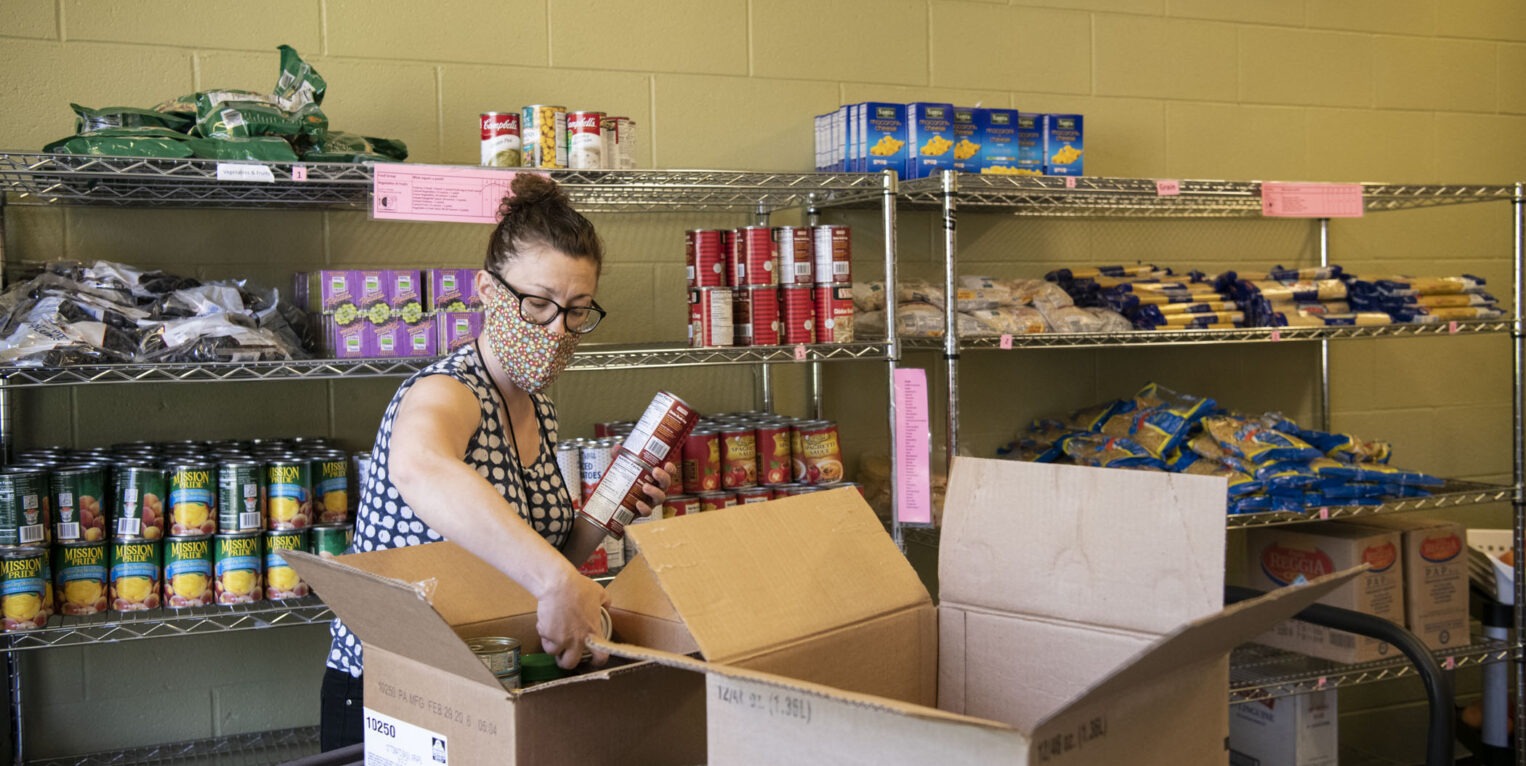En la foto de arriba: Huntington Family Centers, beneficiario de una subvención de nuestro Fondo de Apoyo Comunitario COVID-19. | Foto: Ben Cleeton
En tiempos de crisis, las organizaciones sin ánimo de lucro son algunas de las primeras en responder. Ya se trate de una catástrofe natural o provocada por el hombre, las organizaciones benéficas intervienen para atender las necesidades inmediatas y a largo plazo de los afectados. Aunque organismos gubernamentales como la Agencia Federal para la Gestión de Emergencias (FEMA) dirigirán la financiación de la ayuda en caso de catástrofe, a menudo contratarán a organizaciones sin ánimo de lucro para que presten los servicios necesarios. También es habitual que los gobiernos contraten a organizaciones sin ánimo de lucro en épocas que no son de crisis. Además, las organizaciones sin ánimo de lucro están en una posición única para inspirar, aceptar y desplegar donativos caritativos de personas y organizaciones que quieren ayudar. En resumen, las organizaciones sin ánimo de lucro son un elemento crítico de la respuesta a las crisis.
El propósito y la función del sector no lucrativo es tender un puente entre el gobierno y las necesidades del público, tanto de forma habitual para fomentar una sociedad civil como en respuesta a catástrofes.
En circunstancias normales, las organizaciones sin ánimo de lucro dependen de varias fuentes de ingresos: subvenciones de fuentes gubernamentales, contribuciones benéficas, ingresos como la venta de entradas, las ventas de la tienda de regalos y las cuotas por servicios, y subvenciones de fundaciones y otros financiadores. En función de su misión y estructura organizativa, una organización sin ánimo de lucro puede depender más de unas fuentes de financiación que de otras.
Ya sea debido a un acontecimiento de crisis o a una disminución drástica de sus fuentes de financiación, las organizaciones sin ánimo de lucro apelarán a donantes particulares y corporativos para que les ayuden a mantener su misión y continuar su trabajo. En periodos de incertidumbre o catástrofe financiera, puedes ayudar a las organizaciones sin ánimo de lucro a capear el temporal.
Para obtener más orientación sobre cómo puedes dar de forma significativa y sensible en tiempos de crisis, visita cnycf.org/ disaster, envíanos un correo electrónico a donorsupport@cnycf.org o llámanos al 315.422.9538 y pide hablar con un miembro del Equipo de Servicios Filantrópicos.
En 2023, dos tercios de las organizaciones sin ánimo de lucro estadounidenses de un estudio de panel representativo a escala nacional recibieron al menos una subvención o contrato gubernamental, con lo que la organización sin ánimo de lucro media generó ese año una cuarta parte de sus ingresos de fuentes gubernamentales. (Instituto Urbano, 2024)
A continuación encontrarás algunas sugerencias sobre cómo puedes ayudar:
PREGUNTA A LAS ORGANIZACIONES QUÉ NECESITAN.
Conoce al personal de las organizaciones que te interesan. Habla con ellos. Ellos saben mejor que nadie dónde están las lagunas y qué retos se vislumbran en el horizonte.
DAR A PRINCIPIOS DE AÑO.
Los donantes suelen concentrar sus contribuciones caritativas durante el último trimestre del año natural porque coincide naturalmente con las fiestas que inspiran el espíritu dadivoso. Pero en tiempos de crisis, la urgencia es clave.
PERMITE QUE TU DONATIVO SE UTILICE DONDE MÁS SE NECESITA.
Cuanto menos restrictiva sea tu contribución, más impacto podrá tener, especialmente durante una crisis.









